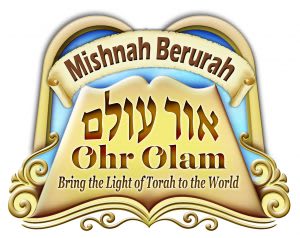Trees, Plants and Flowers on Shabbos
Courtesy of Ohr Olam Mishnah Berurah
Question: What are the Shabbos restrictions regarding trees?
Discussion: It is Biblically prohibited to tear a branch or a leaf from a tree on Shabbos—Reaping. To protect us from inadvertently doing so, Chazal erected several “fences,” precautionary measures, which restrict our access to trees. It is, therefore, rabbinically forbidden on Shabbos and Yom Tov to:
- Shake a tree. One may touch a tree if it will not shake.28
- Climb, sit, or lean heavily [e.g., to tie one’s shoes] on a tree.29 Sitting on a dead tree stump is permitted by several poskim.30
- Swing from a branch or from an object directly connected to a tree. Thus, a swing [or hammock] which is connected to a tree may not be used on Shabbos.31 Even a swing which is connected to a chain and the chain, in turn, is connected to a ring which is attached to the tree is still forbidden to be used.32 If, however, poles are connected to two trees and a swing [or hammock] is attached to the poles, the swing [or hammock] may be used, provided that the trees are sturdy and will not move or bend33.
- To place or hang an object [e.g., a jacket, a sefer] on a tree or on a nail or hook connected to the tree.
- To remove an object from a tree or from a nail or a hook connected to the tree. [Items that are usually used on Shabbos should not be left on a tree from before Shabbos, since one could easily forget and remove them from the tree on Shabbos.34]
- To smell a growing, edible fruit while it is attached to a tree.35 It is even forbidden to eat—on Shabbos—a fruit that has fallen off the tree on Shabbos. It is permitted, however, to eat it immediately after Shabbos.36
- Ride an animal on Shabbos. This is forbidden since it is easy for a rider to forget and pull a branch off a tree while riding.37 As an extension of this edict, the Rabbis declared all animals to be muktzeh.38
All trees—whether fruit bearing or barren, live or dead—are included in these rabbinical decrees.39 But the rabbinical restrictions apply only to the part of the tree which is higher than thre tefachim (approximately 10 inches) from the ground.40 The usage of trees and bushes which do not grow to a height of ten inches is not restricted,41 although, obviously, their branches or leaves may not be picked or broken.
28. Rama, O.C. 336:13.
29. O.C. 336:1; 336:13 and Beiur Halachah, s.v. u’mutar.
30. Aruch ha-Shulchan 336:18; Aglei Tal (kotzer) 29. See a dissenting opinion in Ohr l’Tziyon 2:47-29.
31. O.C. 336:13.
32. Rav M. Feinstein (oral ruling quoted in Sefer Hilchos Shabbos, vol. 1, pg. 62), based on Mishnah Berurah 305:67 and Sha’ar ha-Tziyun 60. See, however, Shulchan Shelomo 336:13 who seems to be more lenient about this.
33. Mishnah Berurah 336:63.
34. Mishnah Berurah 336:12 based on O.C. 277:4 and 514:6. [See explanation by Rav S.Z. Auerbach, quoted in Shemiras Shabbos K’hilchasah 26, note 55. See also a more lenient opinion in Tehilah l’Dovid 277:7.]
35. O.C. 336:10.
36. O.C. 322:3.
37. O.C. 305:18.
38. O.C. 308:39. See CHD to Chapter 308 for more on the muktzeh status of pets.
39. Mishnah Berurah 336:1. Some poskim are more lenient during the summer when it is evident that that the tree has completely dried out.
40. Mishnah Berurah 336:21.
41. O.C. 336:2. However, if the trees or bushes which are less than ten inches high are fruit-bearing, some poskim prohibit those as well; Mishnah Berurah 336:19.

